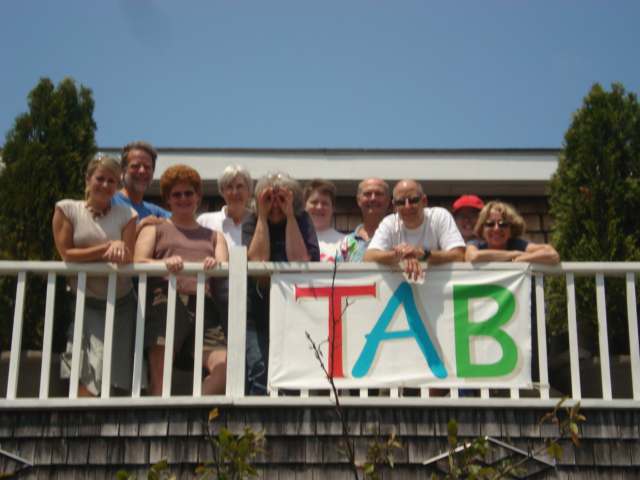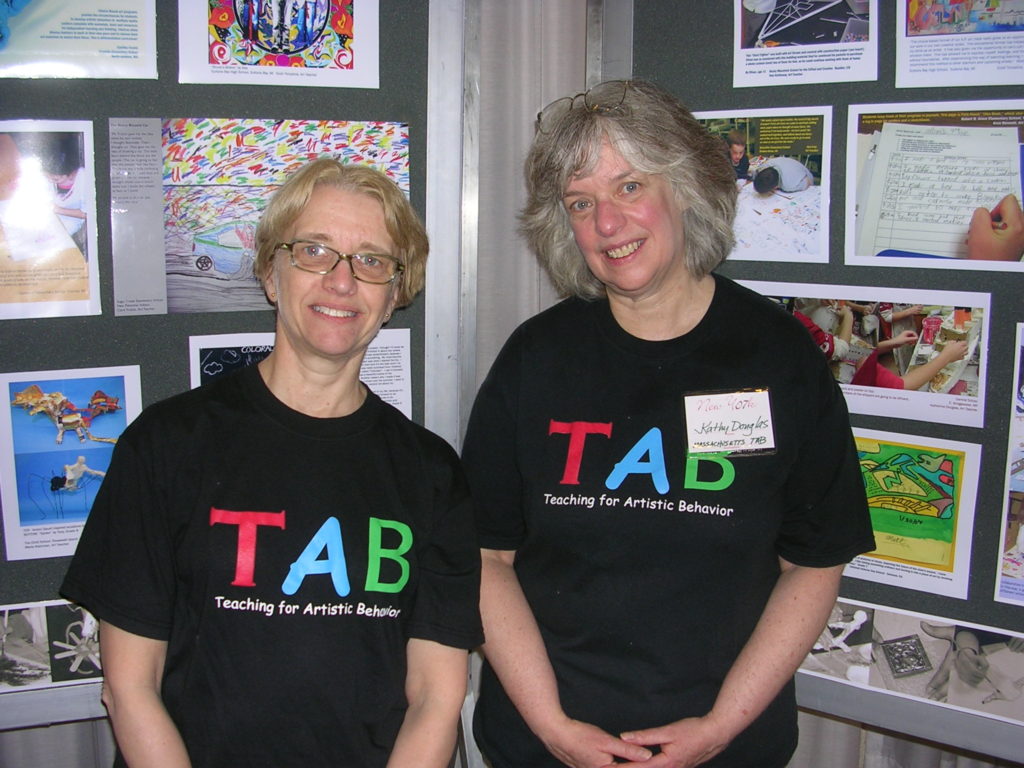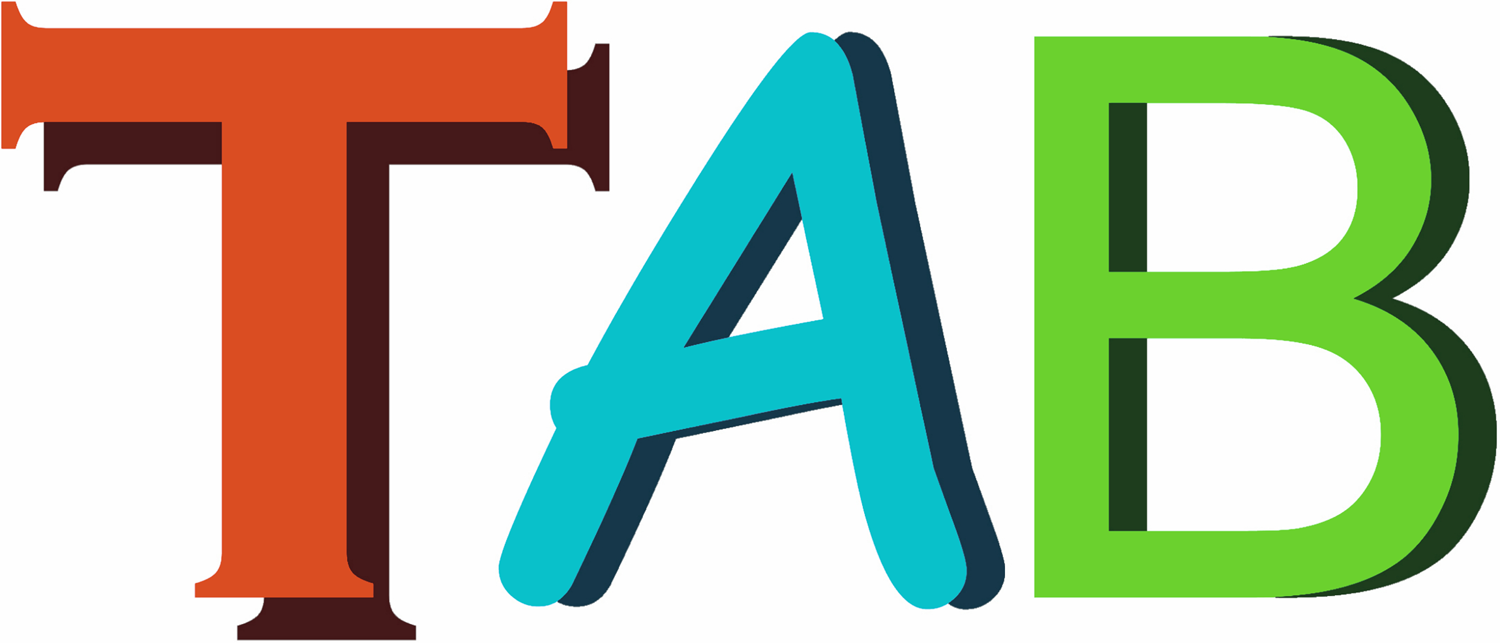Our History


Left: Informal TAB gatherings, such as this one in 2007, build teacher communities.
Right: Diane Jaquith and Katherine Douglas
The practice of teaching for artistic behavior, now known as TAB, dates back to the 1970s, when Massachusetts elementary art teachers Katherine Douglas and John Crowe searched for alternatives to traditional teacher-directed instruction. They collaborated and developed a learner-directed concept within their own classrooms and called this choice-based art education. The Open School Movement empowered other teachers, including Pauline Joseph, to redesign their elementary classrooms and put creative decision making directly in the hands of students. Douglas, Crowe, and Joseph eventually met in the 1990s to offer choice-based professional development at Massachusetts College of Art and at a variety of regional and national conferences. These events provided opportunities to meet others interested in learner-centered approaches to facilitate the development of artistic behaviors. In 1999, Douglas met Diane Jaquith at the 1999 National Art Education Association (NAEA) conference, and the two became long-time collaborators. The Teaching for Artistic Behavior Partnership, the predecessor to today’s organization, was co-founded in 2001 by Crowe, Douglas, Jaquith, and Joseph.
Our organization continues to support TAB teachers by nurturing professional learning communities and networks, and advocating for student equity through choice and student agency.
The partnership created a launching pad for the TAB grassroots movement — by and for teachers — to design their own professional development. Conference presentations about TAB increased visibility in the art education profession. As a grassroots movement, teachers communicated through list-serv forums to share instructional strategies and techniques while building a community of like-minded educators. In 2008, Teaching for Artistic Behavior incorporated as a nonprofit organization focused on honoring children as artists. The first publication of Engaging Learners Through Artmaking: Choice-Based Art Education in the Classroom (Douglas & Jaquith, Teachers College Press, 2009), an academic look at both theory and practice, brought legitimacy to learner-directed practices in the art curriculum.
Entering our third decade, TAB has become a transformative model with a focus on creative process over product, supported by the belief that the child is the artist to maintain artistic integrity in visual art education. TAB practice has grown with contemporary perspectives by international PreK-12 teachers working in urban, suburban, and rural communities. Teachers continue to adapt and expand TAB practice to meet the unique and changing needs of students in the 21st century, resulting in a broad collection of instructional resources shared freely on the Internet.
In order to meet growing demands for professional development, Teaching for Artistic Behavior, Inc. reorganized in 2019 with an expanded Board of Directors, and organizational mission,vision, and belief statements. Our organization continues to support TAB teachers by nurturing professional learning communities and networks, and advocating for student equity through choice and student agency.
Teaching for Artistic Behavior (TAB) continues a long tradition in education where the student takes the lead in directing their own learning. With visible roots going as far back as Dewey, TAB continues to be relevant in providing a framework for students in which students can express themselves.
Knowing and understanding the history of Teaching for Artistic Behavior (TAB) is helpful because it provides insights into current issues and trends. The historical foundations of TAB provide a grounding for educators who are currently using TAB, as a way of supporting their methods of teaching and making a path for future possibilities.
Abi Paytoe Gbayee, Doctoral Candidate at the University of Wyoming and Middle School Teacher, Albany County School District #1, WY
